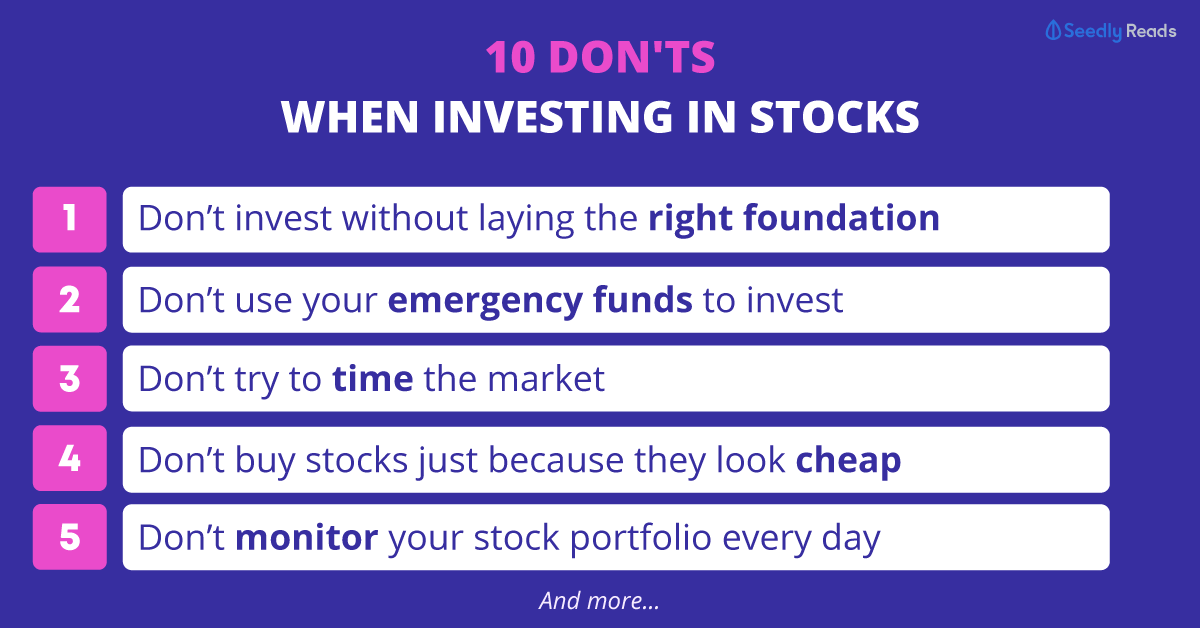Strategy in investing using Stashaway during this Covid-19?
What is the recommended risk index and strategy for a first timer? Looking at long term period and fine with paper loss.
I have some cash on hand and wondering if I should invest a lump sum during this period or split it equally through the weeks since shares price has dip. Please advice.
5
Discussion (5)
Learn how to style your text
Amanda Ong
03 May 2020
Country Manager, Singapore at StashAway
Reply
Save
Pang Zhe Liang
24 Apr 2020
Fee-Based Financial Advisory Manager at Financial Alliance Pte Ltd (IFA Firm)
Before you start investing, it will be best to understand your objective. Here are some questions to help you:
What is your capital?
How will you want to invest your capital? E.g. lump sum or an amount on a regular basis
How long will you want to stay invested? E.g. 10 years
What is your risk appetite? E.g. How do you feel about short-term volatility?
What is your objective for investing?
Through these questions, we will understand more about you and the risk that you are willing and able to tolerate. Thereafter, we can determine the right risk level to invest in.
As for lump sum vs dollar cost averaging, I have written an article comparing the two.
More Details:
Lump Sum vs Dollar Cost Averaging
I share quality content on estate planning and financial planning here.
Reply
Save
Colin Lim
24 Apr 2020
Financial Services Consultant at Colin Lim
There is no recommended risk...there is a risk assessment for you to understand your risk.
For me a...
Read 2 other comments with a Seedly account
You will also enjoy exclusive benefits and get access to members only features.
Sign up or login with an email here
Write your thoughts
Related Articles
Related Posts
Related Products

StashAway
4.7
1293 Reviews
StashAway Simple Guaranteed 3.55% p.a. (Guaranteed rate)
Cash Management
INSTRUMENTS
None
ANNUAL MANAGEMENT FEE
None
MINIMUM INVESTMENT
3.5%
EXPECTED ANNUAL RETURN
Mobile App
PLATFORMS

Endowus
4.7
656 Reviews

Syfe
4.6
930 Reviews
Related Posts









Hi TX,
Thank you for this question and a very good one at that!
First of all, thank you for your trust and for considering StashAway to manage your savings.
We recommend that you choose a risk level that 1) is in line with your risk appetite 2) commensurate with your investment timeline.
1) You don't want to choose a risk level that is riskier and more volatile than you are comfortable with and end up staying up at night watching your phone or panicking and selling at the worst time - when prices are down.
However, you also want to make sure you choose a portfolio and a risk level that can potentially generate the returns you want to meet your financial goals.
We classify our portfolios using the StashAway Risk Index (SRI). This is the measurement we use to determine how much risk our system should expose you to, which then determines your portfolio’s asset allocation. We gave it our own name not to be fancy, but because it’s a specific application of a fairly common risk metric called Value-at-Risk (VaR).
To calculate the potential loss of a portfolio in a year, we use Value-at-Risk (VaR). At StashAway, we use 99%-VaR, meaning a portfolio has a 99% probability of not losing more than a given percentage of assets in a year.
Here’s an example: a StashAway portfolio with $100,000 SGD and a SRI of 10% has a 99% probability of not losing more than 10%, or $10,000 SGD in a year. In other words, there is a 99% probability that your portfolio’s value won’t decrease below $90,000 SGD if you select a SRI 10% portfolio.
2) In general, the longer your investment timeline, the more risk you can afford to take. Why? You have enough time to ride out the short term volatility in the markets, the corrections, the recessions, to hopefully end up with a higher long term average return that come with some asset classes.
If you have a shorter investment timeline, such as wanting to buy a house in 2-3 years, then you will potentially want to keep a larger proportion of these funds in a more protective asset classes like bonds.
Once you've selected your risk level, we generally recommend that you dollar cost averge into the markets instead of making a lump sum investment unless that lump sum investment is a small percentage of your net worth. The larger that propotion, the longer you want to spread out that dollar cost averaging strategy. This is one of our articles that can help you think through this :)